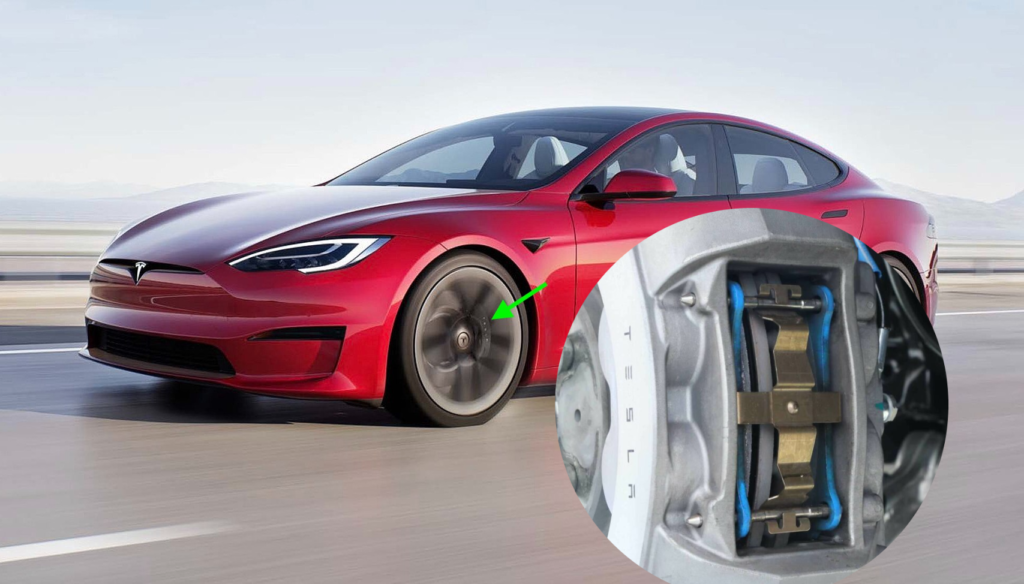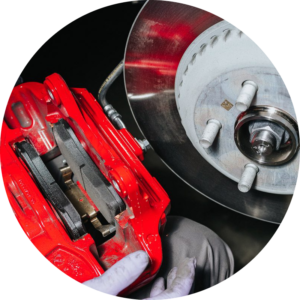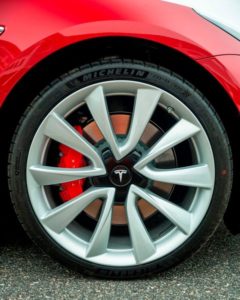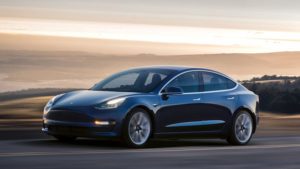In 2018, Elon Musk claimed that Tesla brakes could feasibly last the lifetime of the vehicle. This is unlikely to be the case. Although, Tesla brakes do last longer than the average vehicle’s brakes. Tesla brake case studies seem to suggest that the brakes will last between 100,000 and 150,000 miles, with many Tesla owners squeezing even more life from them.
This doesn’t mean that Tesla owners shouldn’t have their brakes looked at every so often, though. Let’s explain.
Some helpful articles,
- ChargePoint & EVgo: Where to Charge Your Tesla
- What is Tesla Premium Connectivity: is it worth the candle?
- Can you charge a Tesla in the rain: complete explanation
- Tesla models. Most popular Tesla colors: your personal guide
How Long Do Tesla Brakes Last?
This is a tough question to accurately answer. This is because while there have been case studies into Tesla models, these case studies are not really carried out in a controlled manner. It is really just Tesla owners claiming how long their brakes lasted before they needed to be replaced.
The studies seemed to indicate that most Tesla owners managed to get 150,000 miles from their vehicle before the brakes even needed to be looked at. Almost everybody managed to get at least 100,000 miles from their vehicles before they started to notice issues with their brakes. Obviously, those that are slowing down more often (normally those that live in locations with a lot of congestion), are probably going to have their Tesla brakes last down the lower end of the scale.
So, for the average driver, their Tesla brakes are going to last for years. While Elon Musk’s claim that the vehicle’s brakes would last for the lifetime of the vehicle is untrue, you are certainly getting a lot of time from Tesla brakes. In a non-Tesla vehicle, the average lifespan is between 30,000 and 70,000 miles. Just a fraction of what Tesla offers.
Why Do Tesla Brakes Last So Long?
Due to how the Tesla system works. It has a system known as ‘regenerative‘ braking. Rather than hitting the brakes to slow down, a person removes their foot from the gas pedal. When the foot is lifted up from the gas pedal, the vehicle’s motor generates resistance. This slows the vehicle down, while also generating power for the vehicle’s batteries, sort of like a mini generator. The brake pads won’t be used.
There is a traditional braking system in a Tesla, but most people are going to be using it in an emergency. It isn’t the optimal way to slow down while driving. Since the standard braking system is rarely used, the Tesla brake pads last longer. Not to mention the fact that Tesla vehicles don’t have ABS and ESC, both of which are known to decrease the lifespan of a vehicle’s braking system.
How Often Should Tesla Brakes Be Serviced?
Tesla brakes are never going to be a maintenance priority. Most people are never going to notice any issues with their Tesla brakes. However, we suggest that you have the brakes looked at at least once every five years. Chances are that they are going to be fine. However, it is better safe than sorry. If they do need to be replaced, it isn’t too expensive.
The type of Tesla model can also affect the lifespan of the brakes.
The Model S and Model X have larger and heavier vehicles, which can put more strain on the brakes and cause them to wear out more quickly. The Model 3 and Model Y, on the other hand, are smaller and lighter, which can reduce the strain on the brakes and extend their lifespan.
According to Tesla’s website, the company recommends replacing brake pads on the Model S and Model X every 100,000 miles, while the Model 3 and Model Y may not require brake pad replacement for up to 150,000 miles, depending on driving conditions.
Read also: Learn everything about Tesla tire rotation
Driving habits.
Driving habits play a significant role in the longevity of Tesla brakes. Hard braking and sudden acceleration can cause the brakes to wear out faster, requiring more frequent replacement. Driving conditions also have a significant impact on the lifespan of Tesla brakes. City driving, characterized by frequent stopping and starting, can put more strain on the brakes, reducing their longevity. Similarly, driving in areas with steep hills or mountainous terrain can cause the brakes to wear out more quickly due to the increased strain placed on them during prolonged periods of braking.
Weather conditions.
Weather conditions can also impact the lifespan of Tesla brakes. Driving in areas with extreme temperatures or harsh weather conditions, such as heavy rain or snow, can cause the brakes to wear down faster. Therefore, it is crucial to consider all these factors when evaluating the longevity of the Tesla brakes.
When Does Replacing the Tesla Brake Pads Become Necessary?
Tesla vehicles are equipped with sensors that can detect the thickness of the brake pads and alert the driver when they need to be replaced. When the brake pads wear down to a certain level, a warning message will appear on the vehicle’s dashboard. It is essential to take this warning seriously and have the brake pads replaced as soon as possible to ensure the continued safety of the vehicle.
In addition to the warning message, there are several other signs that can indicate that it’s time to replace the brake pads. One of the most common signs is a squealing or grinding noise when the brakes are applied. This noise is caused by the brake pads wearing down to the point where they are no longer effective, and the metal backing of the pads is rubbing against the rotor. If this noise is heard, it’s crucial to have the brake pads replaced as soon as possible.
Another sign that the brake pads need to be replaced is a pulsating or vibrating sensation when braking. This sensation is caused by uneven wear on the brake pads or rotors, and it can indicate that the pads are worn down and need to be replaced.
Finally, a visual inspection of the brake pads can also provide an indication of their condition. Tesla vehicles are equipped with wheels that allow for easy visual inspection of the brake pads. If the pads are worn down to 3 millimeters or less, they will need to be replaced.
How can you increase the service life of brakes?
Maintaining your Tesla’s brake system is crucial to ensure its longevity and reliability. Here are some tips that can help you increase the lifespan of your Tesla brakes:
Use Recommended Brake Fluid:
Using the recommended brake fluid and replacing it every two years can help prevent brake system failure. Old brake fluid can contain moisture and metal particles that can corrode the brake system and cause it to malfunction.
Check Tire Pressure Regularly:
Low tire pressure can increase the stopping distance and cause the brake pads to wear out more quickly. Ensure that your tires are inflated to the recommended pressure level to ensure optimal braking performance.
Clean Brake Rotors:
Dust, debris, and road grime can accumulate on brake rotors, causing uneven wear on the brake pads. Regularly cleaning the brake rotors can help prevent this and ensure that the brake pads wear evenly.
Schedule Regular Brake Inspections:
Regular brake inspections can help identify any potential issues with the braking system before they become more severe. Have a professional mechanic inspect the brake pads, rotors, calipers, and brake lines at least once a year.
By following these tips, you can help increase the lifespan of your Tesla’s brake system and ensure that it remains safe and reliable for years to come.
In conclusion, Tesla is a revolutionary automotive company that has introduced cutting-edge technology, high-performance electric cars, and sustainable energy solutions. While many people are excited about the impressive features and capabilities of Tesla cars, one common question that arises is the lifespan of Tesla brakes. Tesla cars are known for their long-lasting and durable brakes. However, several factors can impact the lifespan of the brakes, including driving habits, driving conditions, and the type of brake pads and rotors used. By practicing good driving habits and following the recommended maintenance schedule, Tesla owners can ensure that their brakes last as long as possible.




